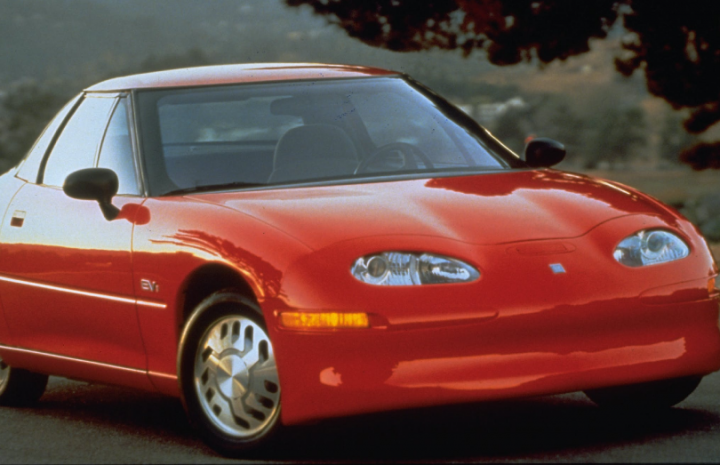The history of electric cars is interesting and dates much further back than that of gasoline vehicles, which is something most people don’t realize.
Early experimental prototypes were built in Hungary, the Netherlands, and the UK around the 1830s. The first practical EVs didn’t appear until much later. The first electric car with a decent driving range is often considered to be the model made by William Morrison around the 1890s.
Here are several electric cars that came before Tesla ever hit the automotive scene.
Electrobat 2
It wasn’t long after the original design was revealed that Morris and Salom provided an upgraded version of the original, called the Electrobat 2. This new version weighed less than half of the original and was much more useful. The Electrobat became a taxi used around New York City. This new model provides a rickshaw-like style with the driver standing on the rear and the passenger seated at the front.
Although the limited driving range was a drawback, the engineers developed a battery swapping system that could replace the batteries in only a few seconds using a crane, allowing the Electrobat 2 to drive around the city all day.
Egger-Lohner C.2 Phaeton
Most people would never guess that the first Porsche vehicle was, in fact, an electric car. The Egger-Lohner C.2 Phaeton did not bear the Porsche name officially, but Ferdinand Porsche designed, built, and eventually raced the car himself. He had the car engraved with P1 on all the major components to give it the Porsche stamp of approval.
Baker Imperial Runabout
Some will say the Baker Imperial Runabout was the first official electric car in American history, appearing in 1899 as a product of the Baker Motor Vehicle Company. This car was extremely popular with celebrities of the time and was too expensive for most people to own. Still, Thomas Edition and First Lady Helen Taft both owned a baker Imperial Runabout.
Le Jamais Contente
The Le Jamais Contente is a streamlined car made of lightweight metal alloy and two electric motors, giving the car nearly 68 horsepower. This was enough power in 1899 to hit 65 mph, which became the land speed record of the time. This was the fastest electric car in history at the time, beating a French rival that had reached 57 mph. This car became the first to break the 100 km/h (62 mph) barrier.
Milburn Electric Light Brougham
The first year Milburn Wagon Company sold the Electric Light Brougham, 1,000 models were sold, with 1,500 units sold the next year. The total number reached 4,000 units before gas-powered cars took over. This made the Electric Light Brougham one of the most successful electric cars in history. In fact, the company created a way to remove and replace the batteries quickly and easily. This was the first electric car to offer 100 miles of range and replaceable batteries.
Detroit Electric
Before it was Detroit Electric, the company was called Anderson Electric Car Company of Detroit. The new name rolls off the tongue much easier. Early models hit the streets in 1907, and both Thomas Edition and Henry Ford owned a Detroit Electric. Name-dropping might have begun with this car because the company used the names of celebrities and other car company executives that drive a Detroit Electric as part of its marketing strategy. This was the first electric car with such success, but, like so many other things, the Great Depression killed off the company that had built more than 35,000 models before closing in 1939.
Chevrolet Electrovette
The Chevrolet Electrovette was begun in 1976 and unveiled in 1978 as an electric car meant to make EVs affordable and offer decent performance. Although the world was in the middle of a gasoline crisis, a car that only offers 63 horsepower and 50 miles of driving range at 30 mph wasn’t going to impress anyone. The Electrovette was enough to bring a few buyers into the mix, but by the time it hit the market, the oil crisis had died down, making it a failed venture.
GM EV1
Most modern EVs can look to the GM EV1 as the foundational vehicle that sets the tone for today’s market. The small spark of consumers interested in EVs has grown to large numbers, and it couldn’t have happened without the EV1. This GM product was sold in California, with a total of 1,117 models heading to customers for three-year leases. GM destroyed most of the EV1 models after the lease periods ended.
AC Propulsion tzero
The AC Propulsion tzero could be the first long-range EV with nearly 200 miles of driving range and a sprint time from 0-60 mph of only 3.6 seconds. This exciting electric car is why Elon Musk became part of Tesla Motors, eventually becoming the CEO of the company. In fact, if it weren’t for the tzero, we might not have ever seen the Tesla Roadster, which was Tesla’s first electric car.
This post may contain affiliate links. Meaning a commission is given should you decide to make a purchase through these links, at no cost to you. All products shown are researched and tested to give an accurate review for you.

